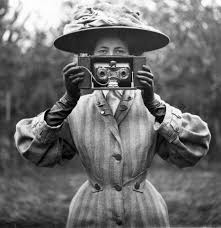


At the moment, especially with the release of the movie Avatar in 3D, among many other highly regarded commercial 3D releases (Up, Coraline, etc.), 3D imaging seems poised to take over commercial media. According to various experts (disclosure: I'm not a 3D or media expert), next year will see the release of many, 25, a billion, an uncountable, unimaginable total of 3D releases in movies, television, the web, and doctors' offices (disclosure #2: I'm not a doctor). Okay, now the Big Disclosure: Avatar is the first contemporary, major 3D release I've seen. Prior to that I'd only seen a 3D short on Siegfried and Roy (that's right, the stylish, and not always so successful tiger tamers and Vegas magicians). Don't ask. And that was in Imax and the 3D “goggles” were actually a helmet. My 9 year old daughter was amused, and frankly, the experience, as the saying goes, was so bad it was good. Kind of like a Ken Russell BBC movie but with Siegfried and Roy (rather than Beethoven). Prior to that, the last most contemporary, commercial 3D release I saw was in fact a 1982 re-release of Alfred Hitchcock's Dial M for Murder in which the action takes place almost entirely in a small, single room. And it was brilliant (I wouldn't be as succinct re Avatar). Dial M for Murder was made, originally in Natural Vision 3D, in 1954. The same system that was used for the earliest forays in commercial 3D motion pictures, Bwana Devil and House of Wax.
So I'm not a total 3D fanatic. But it's here (we live in it) and I have to deal with it. And if you're at this blog, you do too. Most likely you have something interesting to add on the subject besides endless praise and bowing to the masters of big budget, do-it-with-LOTS OF OTHER PEOPLE'S MONEY 3D. There's certainly enough of that going around and frankly, it's almost enough to make you want to work in 2D!
Let's play with stereoscopy. This is kind of an unusual approach, and can be done without taking a new photograph, which is especially convenient as you probably don't have a special, twin lensed camera (I don't, but would like one if you've got an extra). If you do, go shoot something and come back with it. Basically we're going to animate existing stereoview images to recreate the illusion of 3D (albeit with a bit of wiggle, see below). Plus it's a cool, paracinema technique, which, being more of a film person than a 3D modeling person (actually, I'm not any kind of 3D modeling person, that's Leontyne's area), is appealing to me. And you get two projects in one: 3D and film animation.


Matthew Schlanger, an old friend, media artist and president of the interactive media company, Black Hammer Productions, created the gif images above back in the previous millennium from some old stereoview images. Here's what he has to say about them:
"Prior to working with the web, I explored alternating view 3D with video. In the 70s and 80s, analog video sequencing tools offered a simple way to achieve nice alternating 3D results. (At one point I built a box for my SVA students that allowed them to create wiggle 3D as well as alternating field 3D.) When building our website, and this was in the early days of website development, it seemed natural to use this new thing called an animated gif to create wiggle 3D images. What you see here are some of the results."
Here's a tutorial I created (bear with me, this is my first attempt at one of these) that quickly demonstrates how you can turn an existing stereoview into a 3D animated gif like the ones above. (I'm using Photoshop CS4 but you can do this with almost any image editing software and even in very old versions of Photoshop with the Image Ready component for the animation portion of the project.)
How to Convert a Stereoview into a 3D Wiggle Animation from Computer Clubhouse on Vimeo.


Butterfly photo by OliverK. Ornament dealer photo by T. Enami.
Here are some links to wiggle animation collections online:



